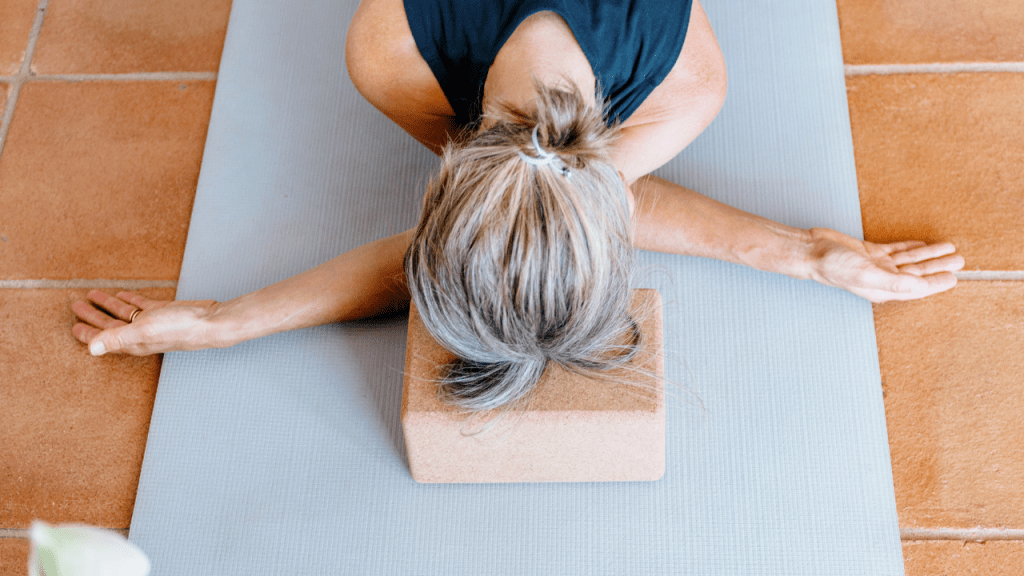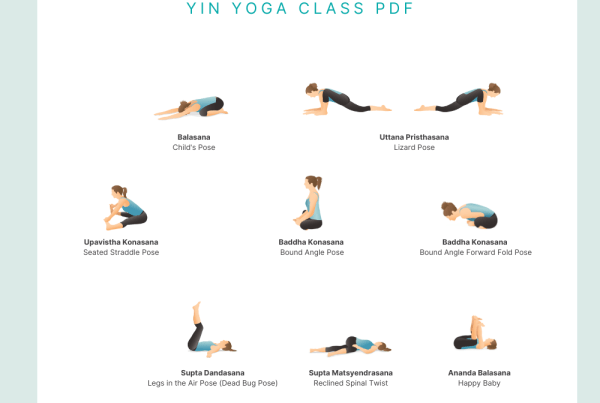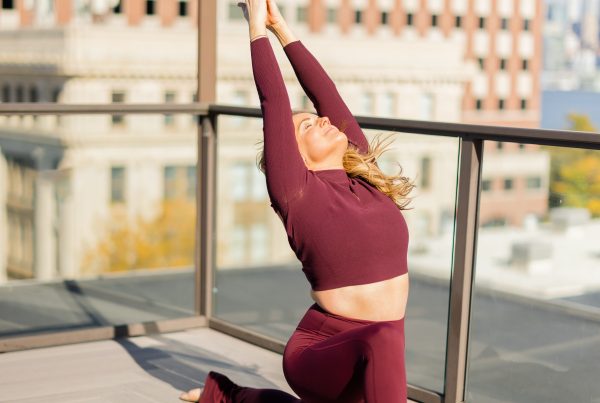
What is yin yoga for?
Yin yoga is a specific type of yoga rooted in Chinese medicine that focuses on holding poses for extended periods of time to access the fascia, or connective tissue, of the body. Yin yoga is designed to improve flexibility, enhance mobility, and deepen steadiness in being able to hold poses and quiet the mind.
Is yin yoga okay for beginners?
This style of yoga can be suitable for beginners if they listen to their body and incorporate props. A lot of times, the teacher will assign props at the beginning of class and can make a huge difference when utilized throughout the practice. Incorporating props helps students access the pose in a different way, oftentimes allowing them to hold the postures in the extended period of time (5-7 minutes) more comfortably.
What is the difference between yin yoga and normal yoga?
Vinyasa yoga is typically the most popular type of yoga. This type of yoga often incorporates Sun Salutations and a “flow” throughout the class. The flow is considered the transition between Downward Facing Dog to Plank Pose to Chaturanga Dandasana (or lowering all the way down) to Upward Facing Dog (or Cobra Pose). That little segment of a flow is considered a vinyasa and will be woven throughout class to create a rhythm of movement.
Yin yoga doesn’t typically include any standing poses let alone Sun Salutations. There are thoughtful transitions done throughout the class, but no structure of a “flow,” or moving through various poses in a vigorous manner. Yin tends to be more passive, as you are in a pose for longer than 3 minutes. Yin poses are typically held anywhere from 3 to 7 minutes, depending on how many the instructor wants to incorporate into a single class.
What are the four types of yoga?
The four paths of yoga are karma yoga, bhakti yoga, jnana yoga, and raja yoga. Each comes with their own respective way of practicing yoga. Karma yoga is through the practice of selfless service, realizing you are the physical manifestation of the divine work of a higher power. Bhakti yoga is through the lens of devotion, practicing through prayer, chanting, and offering of full devotion to the divine (pure love). Jnana yoga is a philosophical path of knowledge and involves the method of self-study to reach a point of realization about the true nature of reality. Lastly, raja yoga is the path of meditation (this path also includes the physical practice yoga asana) to achieve enlightenment. It is done through the eight-limbed path, which includes: Yama, Niyama, Asana, Pranayama, Pratyahara, Dharana, Dhyana, and Samadhi.
What is the gentlest type of yoga?
It depends what you’re inquiring about as being gentle. There are plenty of “yoga” practices that don’t involve physical movement per se and instead focus on the stilling of the mind. These practices tend to be more meditative and help people experience the feeling of “flow” that you get from a yoga asana class without moving the body physically.
Some gentler types of yoga include, yoga nidra, restorative yoga (though physical, you aren’t moving much as most of the poses are done heavily assisted by props), sound meditations (sound baths), “slow flow” yoga classes (vinyasa classes that are far slower paced than a standard vinyasa yoga class).

Yin yoga targets the connective tissue of the body, which is why poses are held for longer and often rely on the support of props to maintain the posture.
More about yin yoga
Philosophy
- Yin Yoga is a slow, meditative practice rooted in ancient Taoist philosophy.
- It focuses on finding balance between yin (passive, cool, and still) and yang (active, warm, and dynamic) energies in the body.
- The practice encourages mindfulness, acceptance, and inner stillness.
- Instead of “doing” a pose, practitioners are invited to surrender and allow the body to open naturally.
Benefits
- Enhances flexibility by gently stretching connective tissues (fascia, ligaments, joints).
- Promotes relaxation and reduces stress by activating the parasympathetic nervous system.
- Improves circulation and joint mobility.
- Supports emotional balance by creating space for stillness and reflection.
- Complements active yoga styles (like Vinyasa or Power Yoga) and athletic training.
Pose Duration
- Poses are typically held for 2 to 7 minutes, sometimes longer for advanced practitioners.
- Holding poses for extended periods allows deeper access to the body’s connective tissues.
- The focus is on gentle sensation, not muscular effort or intensity.
Common Poses
- Butterfly Pose (Baddha Konasana) – Opens the hips and groin.
- Dragon Pose – Deep hip opener that stretches the quads and hip flexors.
- Caterpillar Pose – Forward fold that releases the spine and hamstrings.
- Sphinx or Seal Pose – Gentle backbend to open the chest and strengthen the spine.
- Reclined Twist – Relieves tension in the back and massages internal organs.
History
- Yin Yoga evolved in the late 1970s and 1980s, blending Taoist philosophy with traditional Chinese medicine and modern yoga.
- It was popularized by Paulie Zink, a martial artist and Taoist yoga teacher, and later developed by Paul Grilley and Sarah Powers.
- The practice draws inspiration from ancient Chinese concepts of Qi (energy flow) and the meridian system, similar to acupuncture.
Questions from ChatGPT:
Yin yoga focuses on balancing energy, doesn’t it?
It does! Yin yoga is exceptionally valued for its ability to target the subtle body whereas most other yoga asana practices focus on the flow and movement. Vinyasa yoga is considered a yang practice, meaning it builds head in the body typically through rhythmic movements like Sun Salutations and Chaturanga.
Yin yoga poses for relaxation and stress relief
Most yin yoga poses help reduce stress and calm the body and the mind. While the postures are held longer and can be quite challenging, the effort of finding stillness in a pose helps the body decompress and relaxes the nervous system.
Yin yoga poses that could improve my flexibility
Most yin yoga poses can help with enhancing flexibility. Although, some postures might be avoided due to anatomical restraints or personal injury. It is recommended to avoid certain poses if advised by a doctor but generally yin yoga poses help improve flexibility, mobility, and can reduce stress and inflammation.







